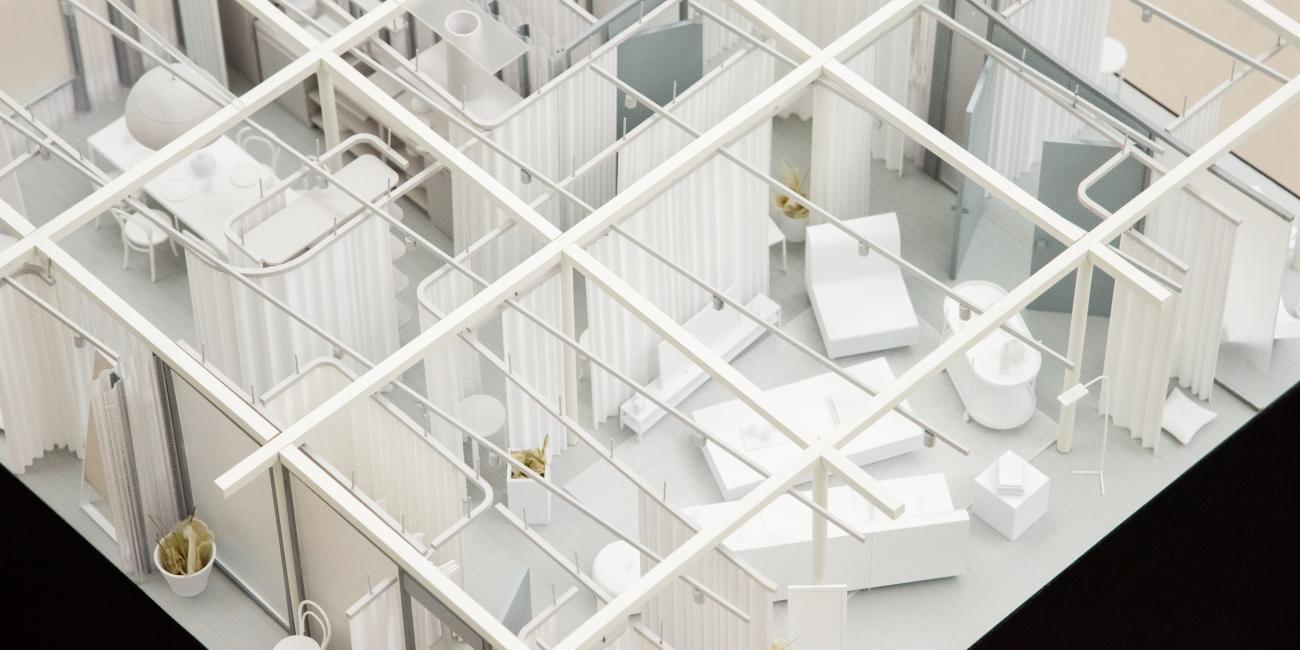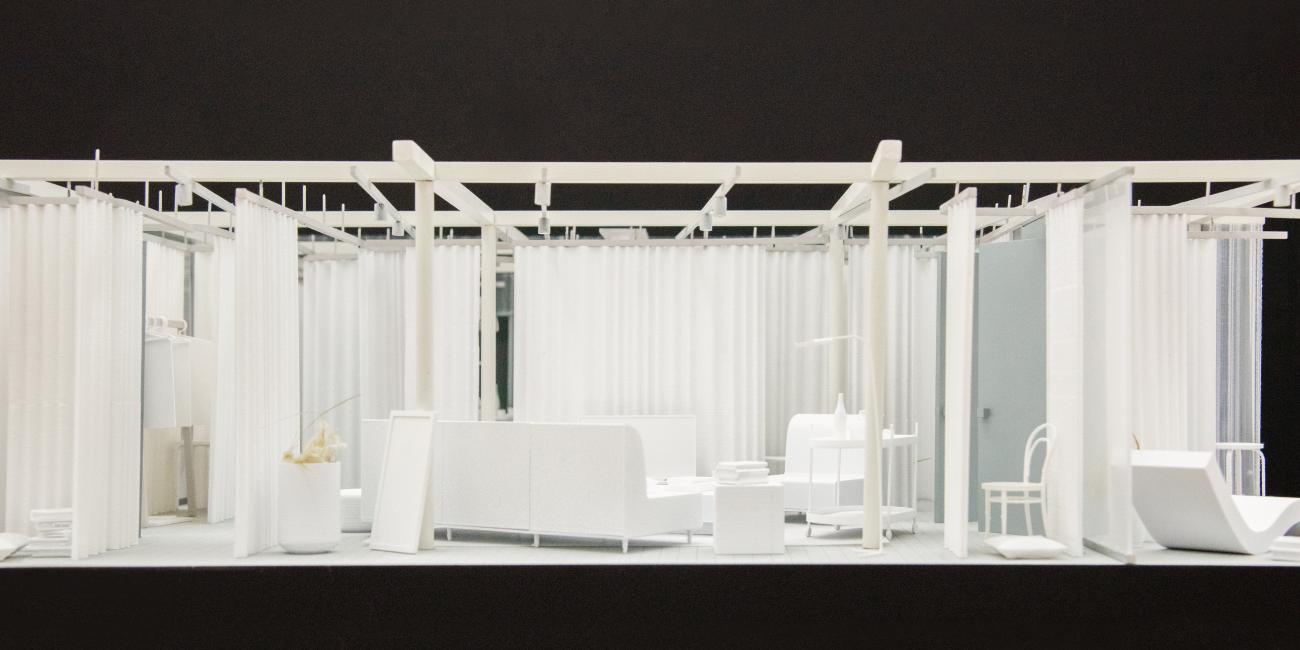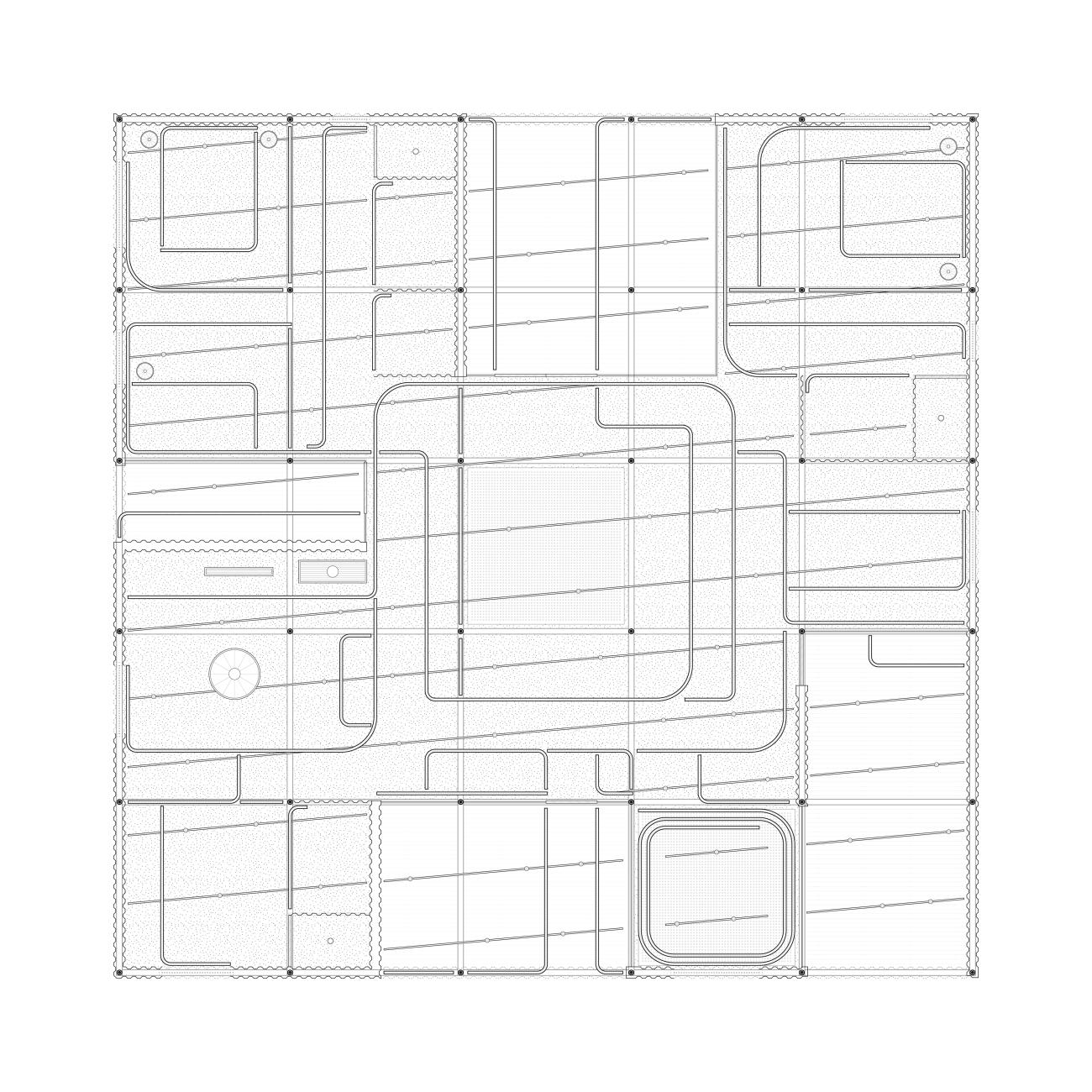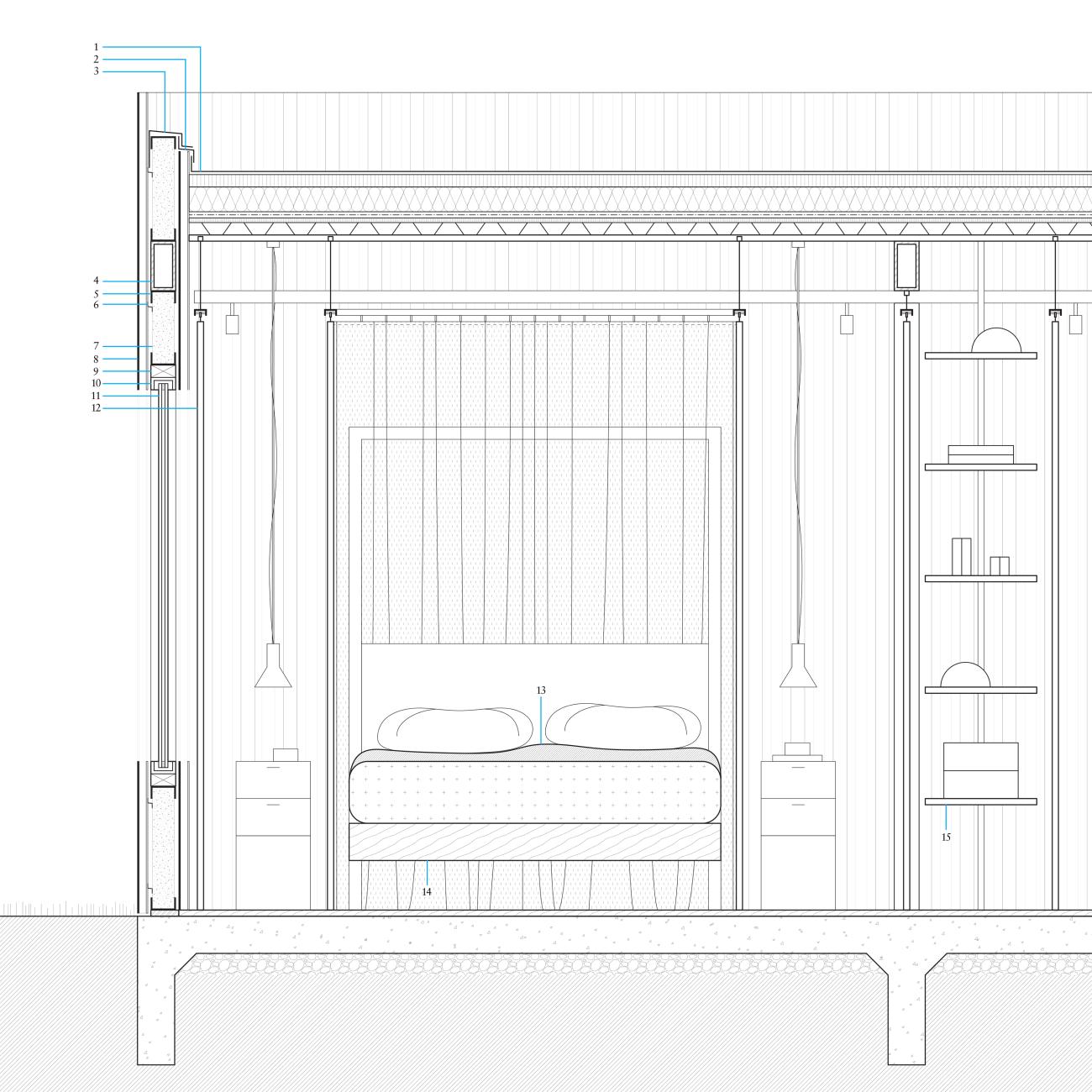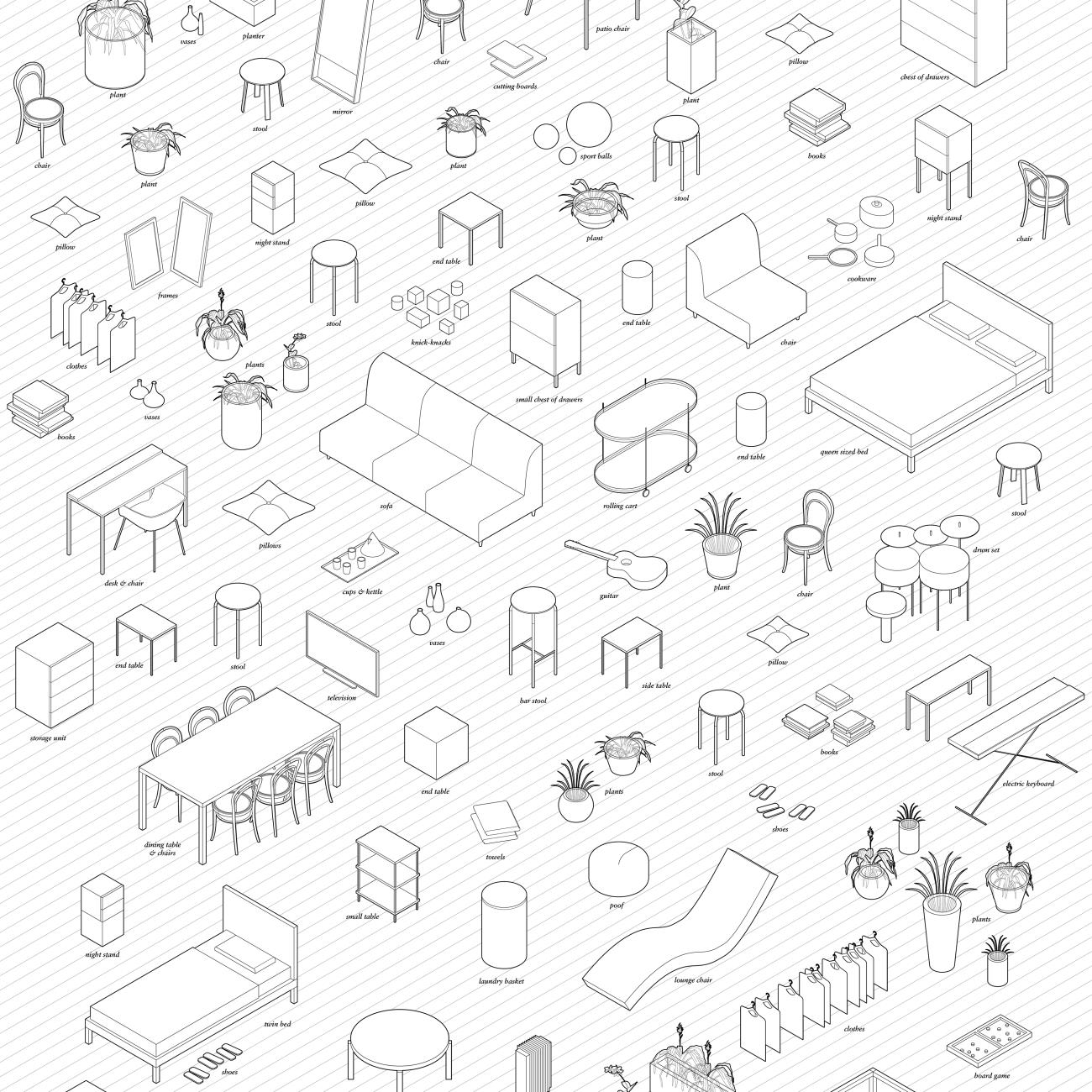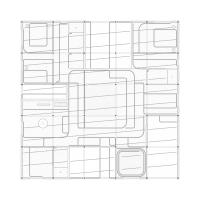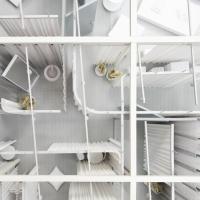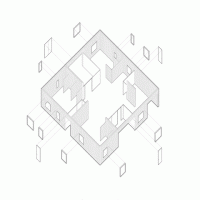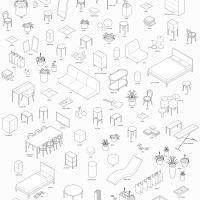Ana Escobar
2019
It is 8 am, and the alarm goes off.
The house awakes…
The curtain lining the bed draws open.
The curtain beyond peels back, revealing the morning sun…
Time to get ready for the day.
As the curtain opens further, the closet is exposed. Clothes are tossed onto the bed…
A third layer pulls back.
Suddenly, two rooms become one…
Suddenly, two rooms become one…
The character of a house may be defined through the relationship between its architecture and its objects. Yet, oftentimes, the inclusion of objects in design is overlooked, despite their importance in shaping interior space. This thesis aims to reassert and elevate the presence of the object in an architectural interior, challenging typical conventions of displaying and storing objects by creating a new understanding of poché. The project speculates on the potential to blur the relationship between the architecture and the objects through a layered system that adapts to reorganize spatial relationships. Through the lens of time, the house is presented as a dynamic interior that responds to the fluidity of contemporary life.
Historical depictions of Wunderkammerns demonstrate when the relationship between space and objects began to be questioned. One extreme positions the object freely in a room, while the other places the object neatly within the confines of the curiosity cabinet. In both cases, a binary condition exists that neglects patterns of life. In this thesis, the relevance arises in questioning how the object-space relationship can oscillate between degrees of poché, responding to an array of living scenarios. Through the systems at play, the house becomes a loose interplay between display and storage, organization and chaos.


